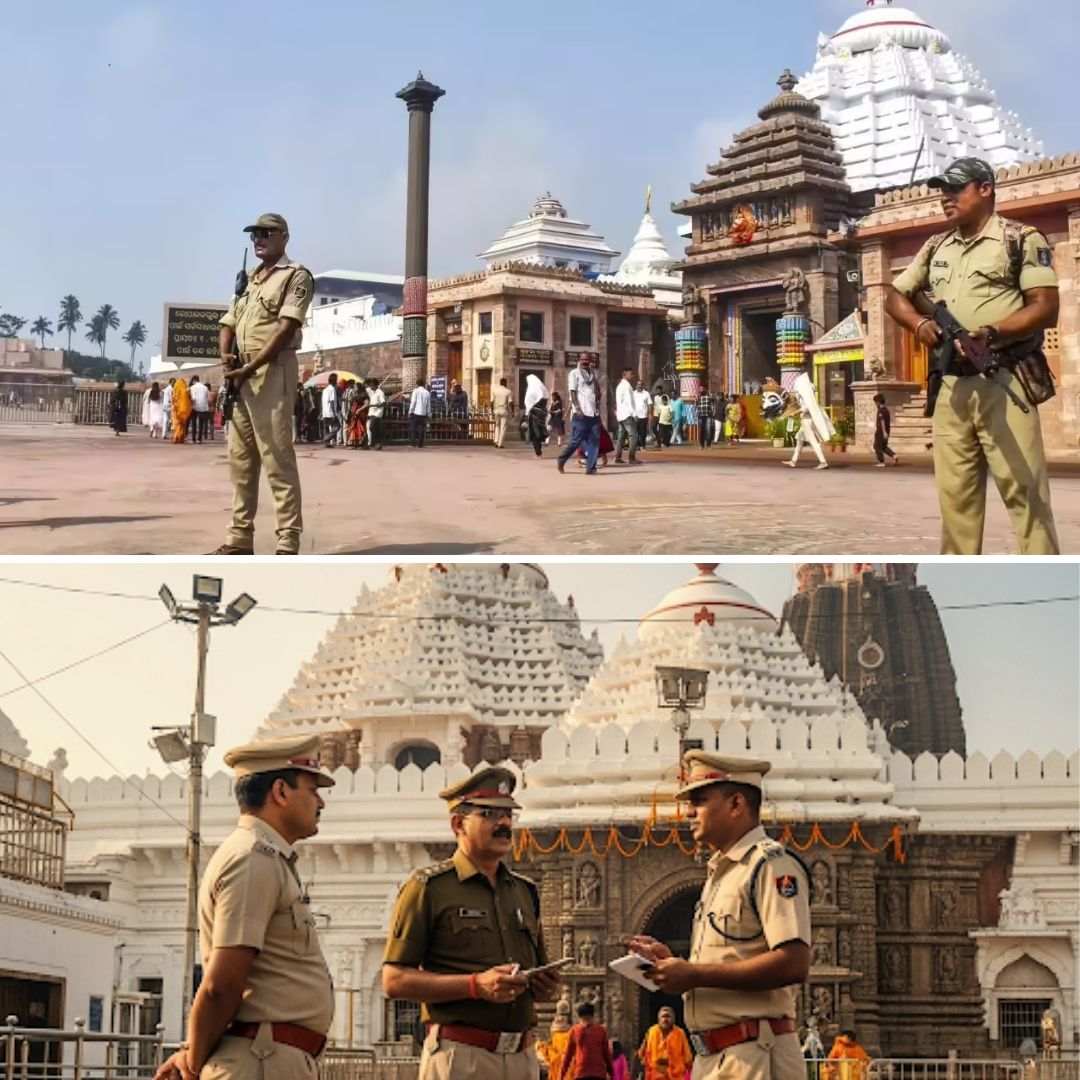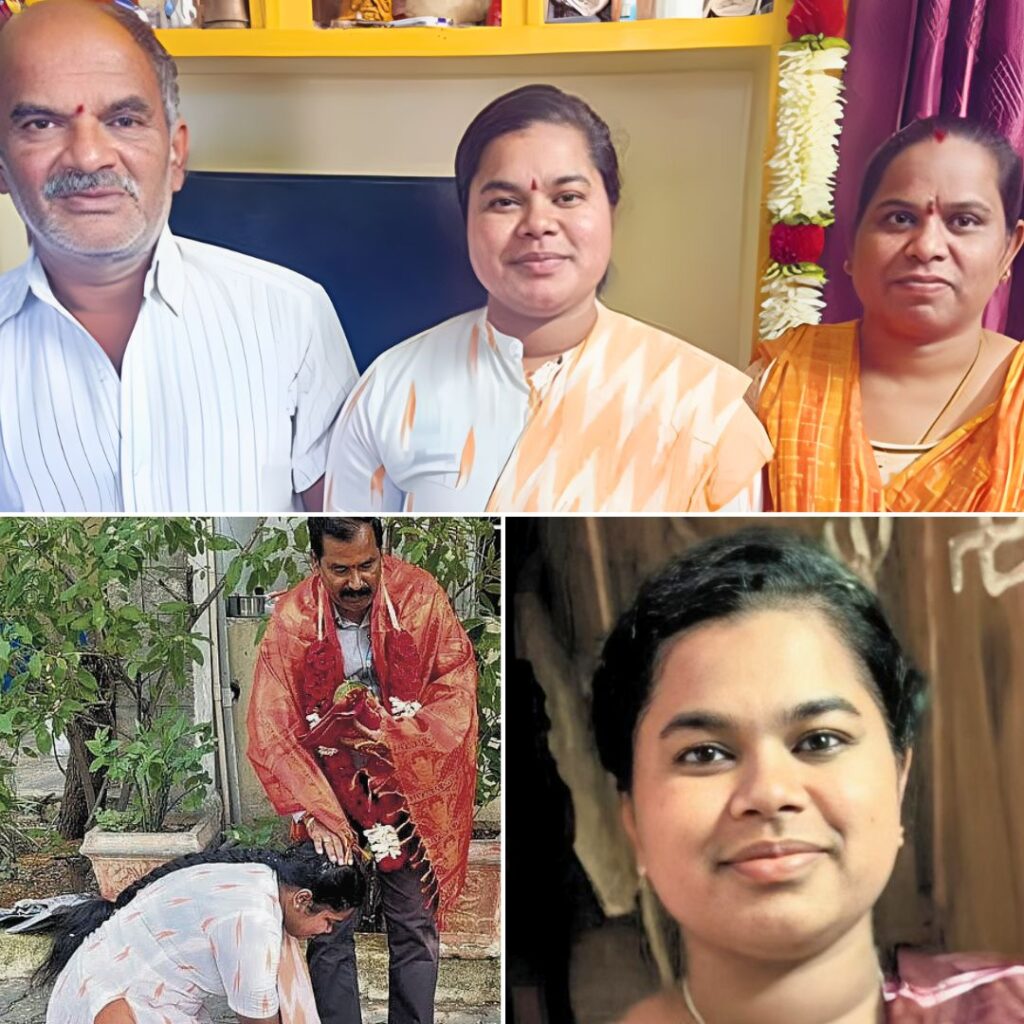Security concerns gripped Puri, Odisha, after threatening graffiti was discovered on the walls of the Budhi Maa Thakurani temple near the Balisahi entrance of the Heritage Corridor (Parikrama Marg), a high-security zone surrounding the famed Jagannath Temple (Srimandir).
The graffiti contained alarming messages such as “Terrorists will destroy the temple” and “Kula Budiba” (your clan will be destroyed), references to Prime Minister Narendra Modi, phone numbers, and instructions to call. One person, identified as Raghunath Sahoo and reportedly mentally unstable, has been detained by police.
Puri’s Superintendent of Police (SP) Pinak Mishra confirmed the investigation is underway amid questions about incomplete CCTV coverage despite the temple’s high-security status. Locals have expressed concern about security lapses, especially after recent breaches and incidents during major temple events.
Threatening Graffiti Discovered in High-Security Zone
The graffiti was found in two distinct locations along the southern stretch of the Parikrama Marg, an area closely guarded due to its proximity to the 12th-century Jagannath Temple, an important pilgrimage site attracting millions annually. Messages like “Terrorists will destroy the temple,” the ominous phrase “Kula Budiba,” and repeated mentions of the Prime Minister’s name heightened alarm among residents and authorities.
Adding to the unease were reports of damage to decorative lighting installed along the corridor, which further fueled fears of deliberate sabotage. Despite continuous CCTV surveillance and regular patrols, the perpetrators managed to carry out this audacious act, raising serious questions about the effectiveness of current security arrangements.
Puri SP Pinak Mishra stated, “This morning, we received information through social media and other sources about objectionable writings on the wall of Budhi Maa Thakurani temple. We are taking this extremely seriously as it concerns the security of Jagannath Temple.” He added that a special team has been deployed to investigate the timing, intent, and persons responsible for the graffiti.
Security Challenges and Ongoing Investigation
This threatening incident comes at a time when security at Jagannath Temple has been under increased scrutiny. Earlier, the Union Home Ministry and the National Security Guard (NSG) had recommended enhanced safety protocols at the temple in light of its cultural significance and large crowds during festivals.
Though CCTV installations exist as part of the Parikrama Project, SP Mishra confirmed that coverage remains incomplete in some areas, possibly allowing the graffiti act to go initially undetected. Police are currently reviewing all available camera footage and following multiple leads.
Authorities have detained Raghunath Sahoo, who is described as mentally unstable and has admitted to writing the graffiti. A medical assessment is ongoing to confirm his mental fitness. The police continue to probe whether this act was carried out to incite panic or if any real threat exists.
This episode follows other security lapses, including a recent unauthorised entry into the temple premises and a tragic stampede during the 2025 Rath Yatra festival, which spotlighted the need for better crowd management and security infrastructure.
The Logical Indian’s Perspective
The threatening graffiti incident at Puri’s Jagannath Temple is a stark reminder of the vulnerabilities faced by sacred cultural landmarks. While it is imperative to strengthen surveillance, law enforcement, and crisis preparedness to protect these sites, it is equally crucial to foster an environment rooted in peace, understanding, and coexistence.
Security mechanisms must not instill fear but rather reassure devotees and visitors that their safety is paramount. At the same time, promoting empathy and dialogue among communities can help negate divisive and extremist narratives that aim to incite panic or hatred.
How can law enforcement agencies and local communities collaborate more effectively to safeguard such heritage sites while promoting a culture of mutual respect and unity? This question is critical as India continues to celebrate its diverse cultural fabric and religious heritage.











